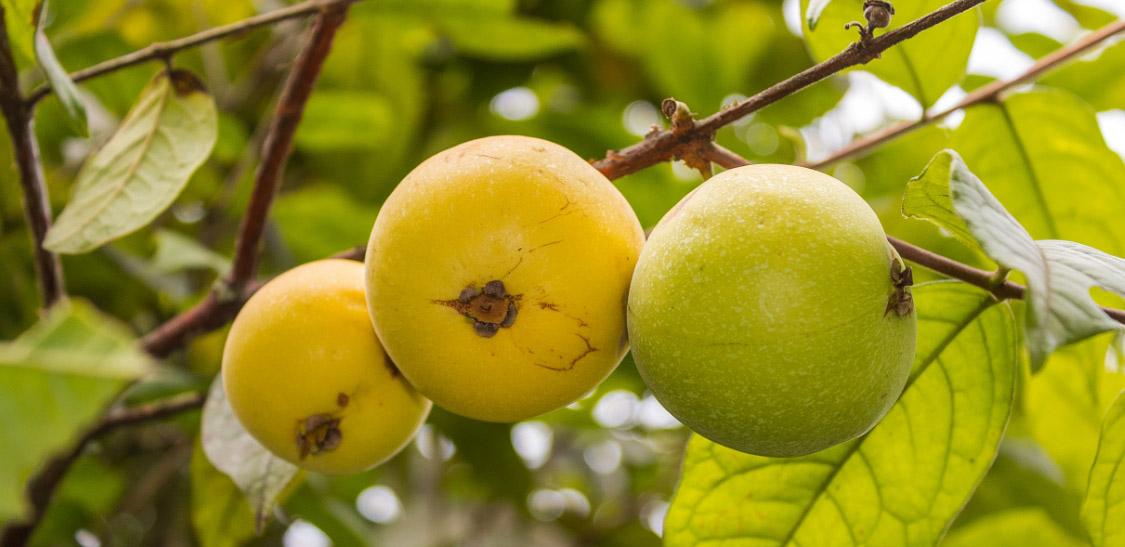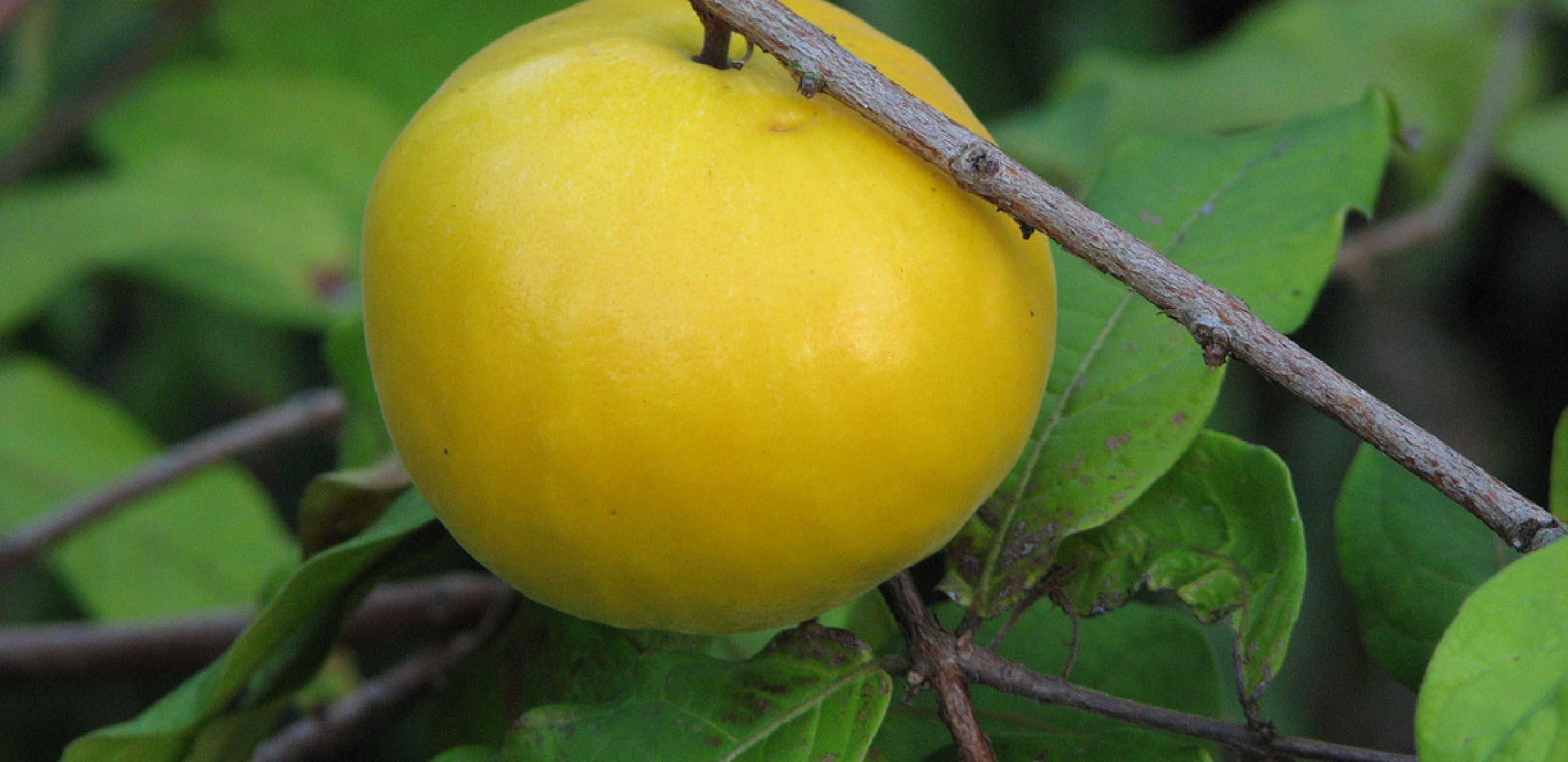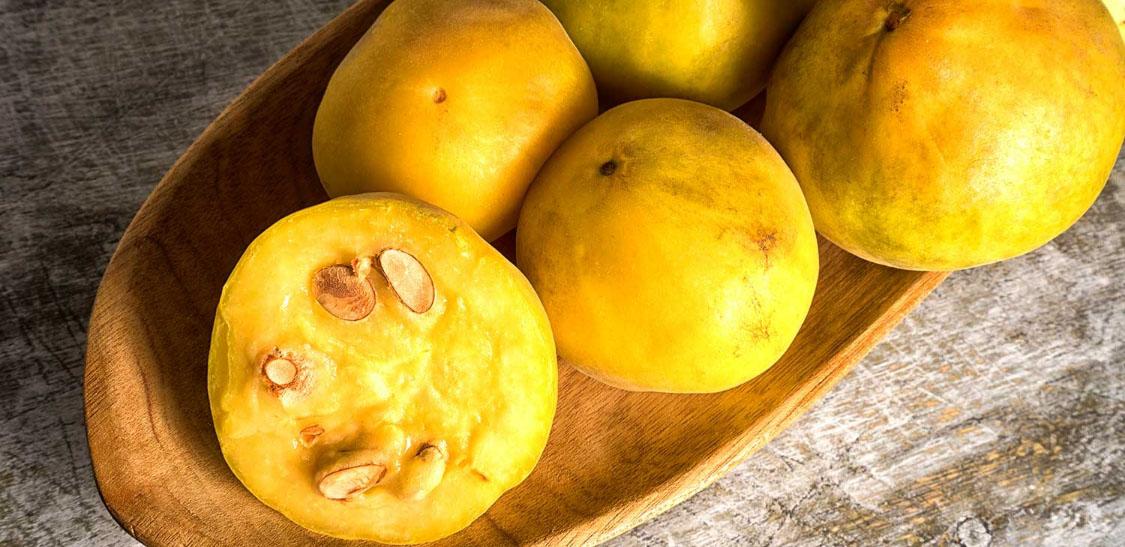
Araza / Arazá
Scientific Name: Eugenia stipitata
Origin: South America
Botanical Family: Myrtaceae
Araza is a tropical shrub native to Western Amazonia, known for its sour, nutrient-rich fruits with culinary and pharmaceutical uses.
Brief History and Description
Eugenia stipitata was domesticated in Peru and expanded into the rest of tropical America. Araza occurs along rivers in Western Amazonia and produces berry-type fruits with economic potential. Araza is a shrub or small tree. Its height is usually between 2.5 and 15 meters. The fruits are spherical, their flavor is sour, and if Araza grows in the jungle, it will yield up to 400 kg per season.
Culinary Usage and Nutritional Properties
The edible fraction of Araza has a high content of K, Ca, and Mg, sucrose, fructose, and maltotetraose. About 30 volatile compounds are also found in this same fraction. Araza seeds contain vanillic acid, gallic acid hexoside, catechin hexoside, and luteolin hexoside. Araza has a high content of phenolics, flavonoids, and antioxidant capacity. Studies suggest that Eugenia stipitata has excellent nutritional value and great functional potential and may contribute to greater commercial exploitation of this fruit in food and the pharmacological and cosmetic industries. Araza fruits contain high levels of nitrogen, potassium, carbohydrates, calcium, proteins, zinc, phosphorus, magnesium, and vitamins A and C.
Araz is so sour (if raw), but the fruit is used for producing homemade products such as juices, nectars, ice creams, jellies, desserts, soft drinks, pastes, jams, syrups, fruit preserves, marmalades, and even liquors.
Economic and Environmental aspects
The Araza fruit has a good quality for processing due to its high level of acidity. That’s why many industries in South America use Araza fruit as the main ingredient for their products. Also, it is used for making homemade products. This tree is commercially popular and exported to the UK. Araza yields fruits throughout the year, and the fruit can be harvested up to four times a year. The chemical composition of this species gives it great potential to be explored in the cosmetic and pharmaceutical industries, in addition to developing new foods with functional claims.
Annual Yield
Each Arazá tree yields between 20 and 35 kg of fruit per year.
Pharmacological Activities and Bio-active Properties
Studies show that phenolic compounds extracted from Arazá fruits have bioactive properties such as antimicrobial, anti-inflammatory, antitumor, anti-obesity, and antioxidant effects.1
This tree also has bioactive properties like:
Strengthening the immune system,
Maintaining the health of the intestines,
preventing constipation,
preventing the growth of tumor cell lines and cancer.2
Green Your Inbox!
With our Newsletters, Stay updated on our Stories of Change and Growth.
As a gift, get a personalised Nature E-card from PH.





